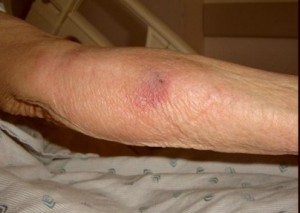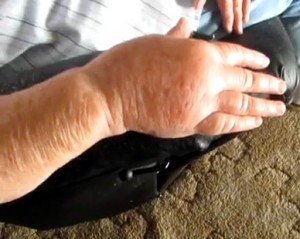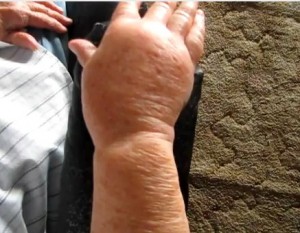Phlebitis is a condition wherein there is an inflammation of the veins. This could happen due to various causes such as prolonged standing, bed rest due to pregnancy, an accident that causes trauma to the veins, or a serious heart condition that would lead to the development of a blood clot which will cause a blockage within the vein and its eventual inflammation. If you suspect that you are experiencing the signs and symptoms of phlebitis, it is best to consult a doctor at its early onset to remedy the condition promptly and more effectively. Phlebitis could last for as long as a year or more. Certain medications are usually prescribed by the doctor as maintenance regimen to avoid life threatening conditions from arising.
Phlebitis causes
Phlebitis can be brought about by various factors. The veins are where the blood flows and anything that would disrupt or hinder the blood from flowing freely within our veins could cause phlebitis. There are two types of veins in our body, namely, the superficial veins and the deep veins. The deep veins are found in between our muscles and these muscles would help pump the blood in the veins for faster circulation. The superficial veins are not surrounded by muscles and therefore, the blood flow is much slower than that within the deep veins. The superficial veins are more at risk of developing phlebitis than the deep veins.
Below are the common factors that could cause phlebitis:
- Formation of a thrombus
A thrombus is a blood clot that consists of platelets, white blood cells and fibrin. It is formed in the heart or the blood vessel because of certain health conditions such as lipidemia or diabetes. The thrombus may travel into the vein and could get stuck in the superficial veins where there are no muscles to help push the blood flow. This could then result to phlebitis.
- Immobility for long periods
Factors such as prolonged standing, protracted sitting, or even lying down for an extended duration could result to phlebitis. This would cause the blood flow in the veins to slow down, thus risking stagnation of the blood in some parts of the body, such as the legs. Prolonged standing could also cause varicose veins.
- Lack of exercise
This is also in relation to immobility. Regular exercise would greatly help in the good circulation of the blood. The muscles would help pump the blood freely within the veins.
- Obesity
Excess fat could cause excessive squeezing of the veins and the blood would have a difficulty in passing through the veins. This would then result to phlebitis.
- Pregnancy
Phlebitis is quite common in pregnant women. Those who are expecting often have the veins in their legs inflamed due to the excess weight they’re carrying. Bedridden pregnant women are even more prone to phlebitis.
- Others
Some other causes of phlebitis would include cigarette smoking, trauma to the veins due to an accident, some drugs that could affect the viscosity of the blood such as birth control pills and hormonal medicines, and health conditions that have an effect on the blood such as cancer, leukemia and anemia.
What are the symptoms of Phlebitis?
Phlebitis symptoms generally include the hardening of the veins which can be felt upon touching the surface of the skin. The area surrounding the affected site would also feel warm and the skin would turn red. If you feel any of these symptoms, it is would be wise to consult a doctor right away in order to prevent the condition from getting worse.
Phlebitis treatment
The first thing the doctor would do before laying out your treatment options is to assess you by asking some questions about the symptoms you have observed and when you started feeling those symptoms. After which, the doctor would then run some tests to confirm the diagnosis. The use of ultrasound would help the doctor detect where the clot is. For severe cases, a venogram would also be utilized in which the vein would be injected with an x-ray dye so the doctor could have a better view of the clot.
After the diagnosis and assessment of the severity of the condition, the doctor would present the treatment plan for your specific case. For mild cases, the doctor would usually prescribe anti-inflammatory drugs such as ibuprofen or aspirin to help manage the pain and lessen the swelling of the vein. The use of compression stockings would also help in correcting the condition. For cases of phlebitis caused by a thrombus or a clot, the doctor would prescribe some blood thinners, such as Clopidogrel to be administered over 3 to 6 months. Antibiotics may also be recommended if there are any infections found. For really severe cases, the person affected would need to be confined in the hospital for better monitoring of the blood flow and as well as the health of the patient.
Though phlebitis is not exactly a life threatening condition, it is better to avoid it from occurring. Regular exercise, such as walking or light jogging, could greatly help in its prevention.
Phlebitis pictures
Here are the picture of phlebitis, which illustrate the severity of the situation, caused due to vein inflammation.


